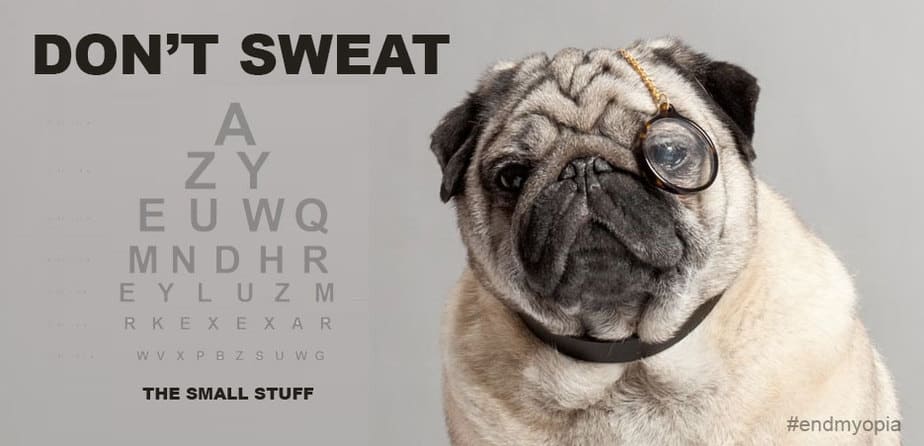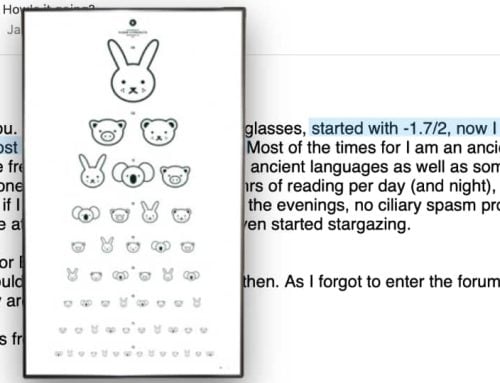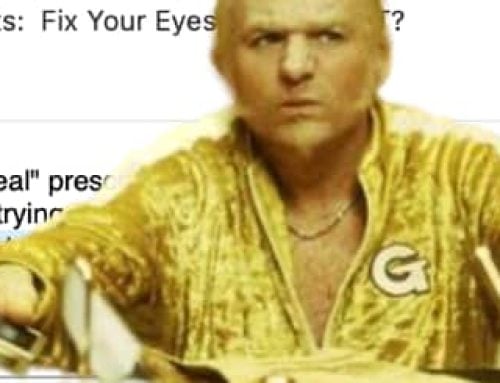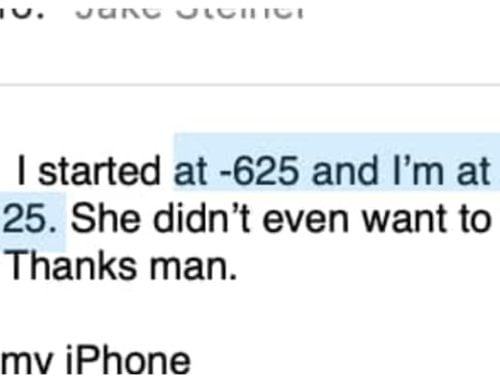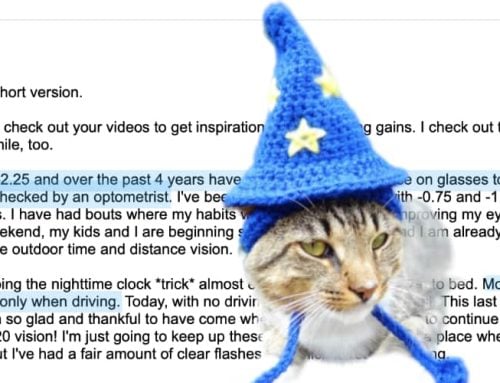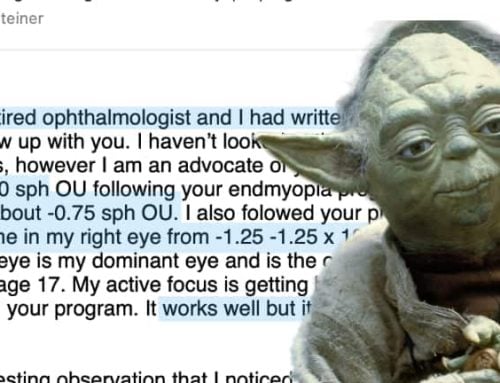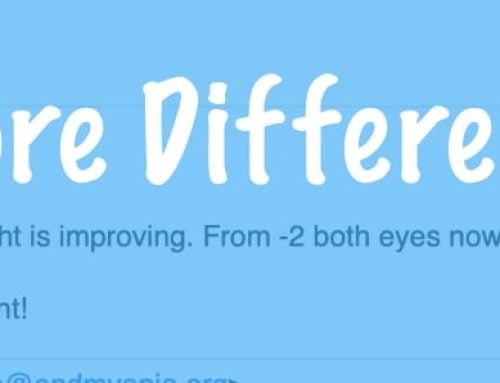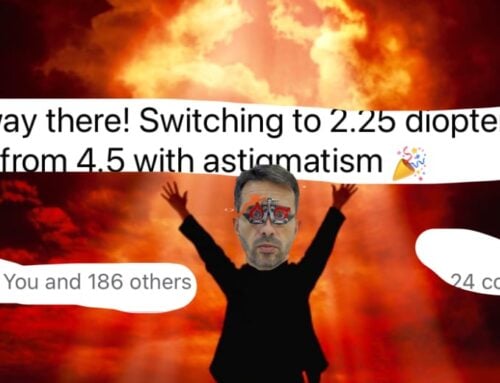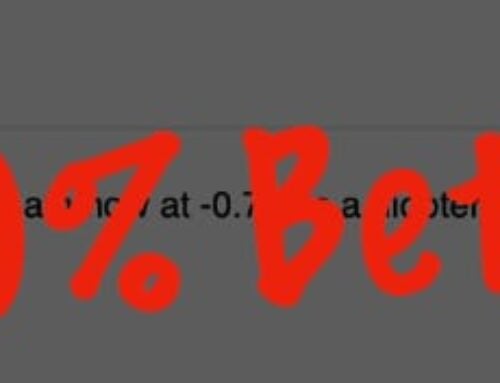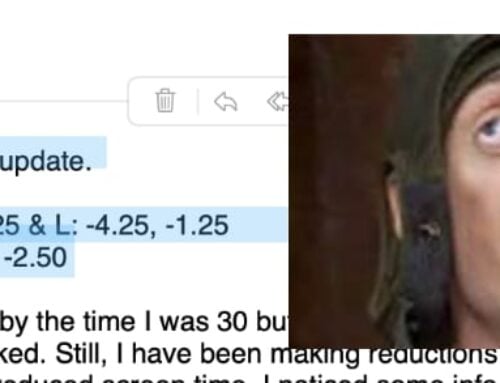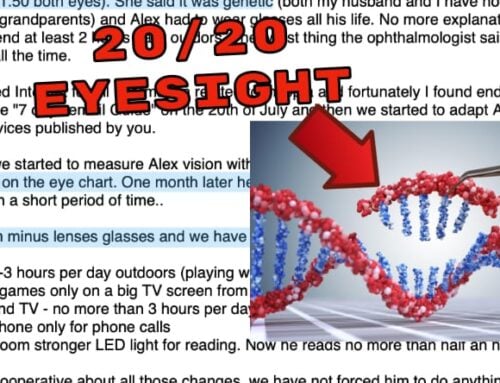I just wrote a rather lengthy response in the forum, addressing a low myopia question. This is definitely a pro topic, so if you’re a casual reader, don’t start monkeying around based on anything you read in this post.
Also, everything is here is perfectly unsanctioned, non-medical, fully unlicensed (and yet highly guru-esque and professional) advice.
Here’s just an excerpt of the forum question:
I like to go on walks at night. Recently, I’ve been outside and tried my various minus glasses (of which I only wear the -0.25 – and even that very rarely –, the others I have never used, so don’t worry about a student potentially monkeying around with lenses all too much) on back-lit advertising. I stepped as far back as was necessary to still be able to barely read one of the smaller black-on-white texts with the -0.25. Then I tried -0.50, -0.75, -1.00, -1.25, 1.50 (stacking where necessary).
Result: With the right eye, there is noticeable improvement until -0.50. -0.75 gives some improvement over -0.75, but still not enough to really read the text. With the left eye, there is some small improvement with -0.50 over -0.25, but not as much as the step from no glasses to -0.25. With both eyes, -0.75 seems to give slightly better depth perception than -0.50, which in turn gives much better stereopic vision and slightly less blur than -0.25.
Note: I did not use neon-lit signs, as I’ve found those to be exceedingly difficult to focus on, even with -0.75. I had to go -1.25 to see them sharply, which I find odd, because they are really the only thing where anything over -0.50 gives me noticeably better vision.
Above is an example of one common personality type in BackTo20/20. Highly analytical, detail oriented, specific. Love these guys.
The other common personality type is the one who never measures anything, keeps no log, spitballs lens changes, probably has a sip of whiskey and a cigar handy. Doing things with less assistive focal plane change than a Jake would probably recommend (and yet ironically, Jake often falls into this latter category).
Each personality type has their distinct advantages, and also common challenges.
This post is about realising what matters on the course of reversing your myopia, what’s productive, and what’s purely a matter of personal preference and curiosity. Let’s look at my comments to the forum question:
You might have noticed that I tend to be what might be interpreted as ‘vague’ almost, or perhaps laissez-faire on some specific details, especially when making low myopia recommendations. The reasons for this could easily get out of hand for a single forum post, but short version .. there is a lot more that can affect progress, upset the proper working of the visual cortex, and make things difficult for the student, when there’s high myopia, high prescription complexity in play.
With low myopia, the lenses are often more of a crutch level, than wheelchair level if we can use some casual analogies here.
You see me give all sorts of detailed suggestions on diopter ratio, astigmatism change, reductions for the high myopes. But then for those under -1.50 all of sudden the same Jake says, “hey you know just don’t wear them when it’s sunny and you’re outside for a walk. Skip glasses unless it’s night time or you’re driving, or you really need them.” Seems odd at first glance, but you really don’t benefit much (or at least more likely than not, that’s what I find with most students) from super fine tuning low myopia focal plane changes. It’s more of a risk of paralysis by analysis, of over interpreting tiny symptoms, of getting burned out on the subject.
Hence, simple is great. If you don’t really need the glasses during the day (not driving), great. No glasses. If a half diopter does the trick in the evening (giving you blur challenge but not feeling claustrophobic of giving you headaches after a few hours of wear, from excessive challenge), also great. Could adding a 1/4 diopter of cylinder improve depth perception? Maybe. Do you want to explore that option? Probably not!
None of the above is to dissuade you from experimenting. By all means, a lot of this should be fun, suit your personality style, as long as you know the basics (and you do, obviously), you can’t really go too far wrong. Just in case you’re unsure of how much is truly *necessary*, the answer is … crutch level. Eyeball it. “Close enough”, is perfectly fine.
The more important ingredient is patience (which tends to be fostered more by the laid back approach). Maybe two months go by and nothing much changes. And then one day you look across the street (no glasses) and realize that signs just pop, are super clear. Or you put on a stronger plus and you can see just as well as with the weaker one.
Especially with low myopia, it’s all about knowing it works, and playing the long game.
Make sense? (full thread here)
All in all, there’s no definite right and wrong way. The only mandatory part is taking the first two months of BackTo20/20 exactly as written, no funny business, no changing things around. Those two months cover all the basics, and give you enough time to learn what you need to know about your own biology, make some progress, and build some habits.
Ideally you’d go the first six months without messing around too much, but as long as you cover the first two months, I’m reasonably satisfied.
We’ve learned a lot, as a group, from the rebels, from the experimenters, from both the cigar and whiskey, and the detailed analysis camp. Endmyopia wouldn’t be anywhere near where it is today, without stepping outside of the bounds here and there. So play around, once you know what you’re doing. You’ll know how to assess if you’re on the right track. And post in the forum, so we can share in your experience, learn from your findings, and allow me to offer suggestions and little nudges, when appropriate.
Cheers,
-Jake

